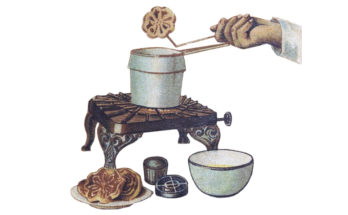“Honey, could you go to the store and get some corn?”
Corn can be used for good or evil.
To make corn whiskey, you start with corn, and a few other grains, say, rye and barley for a richer taste. The following is for a historic guide only, not a recipe to follow. It is paraphrased from an early 1900s book. First you make a malt, then a mash, ferment, then distill a few times (the dangerous part).
To Make A Malt: The barley and rye seed grains are soaked for days in about 53 degrees F water, stirring frequently to clean impurities from the top. When the grains are soft, spread out and dry the grains, yet in a moist air to germinate. Roots will begin to show, and the batch will have a pleasant smell. The seeds are then spread out in a dry room to gradually and completely dry. The grains are now considered to be a malt.
To Make a Mash: Grind dried corn kernels into a corn meal. Mix the corn meal with the above malt in a ratio where the fermenting power of the malt will convert all of the starch of the corn into sugar, and then an alcohol–both accomplished in the fermentation stage. But at this step, water is added, and it is cooked and stirred below 140 degrees to have it not ferment. The mixture forms a paste, called mash.
To Ferment the Mash: The temperature of the mash must be kept constant at about 86 degrees F for about 72 hours with an abundance of fresh air which is important to the process. Gas is expelled into the air during this time but not thought dangerous. It is 10% alcohol, and its technically called a ‘beer.’ I never smelled it, but I read that it smells like vomit at this stage.
To Distill into Whiskey: This is the most dangerous step, where the alcohol substance is separated from the non-volatile substances. Vents are needed to expel the intense heat of the distillation process. After the alcohol is separated, the remaining mash is said to feed cattle. There are a few stages of distillation. The first result of condensation is about 20% alcohol, technically called a ‘wine.’ A re-distillation of the results garners a 55% alcohol. This whiskey is filtered and put in oak barrels to age, picking up the coloring of the wood. Some say the wooden barrels smell like toasted marshmallows. The corn whiskey itself is without scent, except a light sweet smell of corn, etc.
